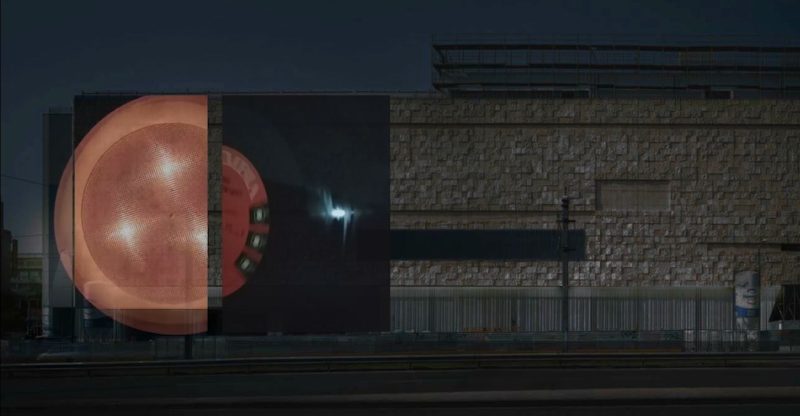General
Digital Audiovisual Applications course proposes a post-disciplinary approach to New Media representations through ontological and epistemological reflection on contemporary digital art-works.
The course’s research is guided by the following questions:
• How do we investigate massive visual collections which may contain from some hundreds to billions of images?
• How do we research interactive media processes and experiences?
• What new theoretical concepts and models we need to deal with the born-digital culture?
The course’s projects are covering the following areas:
Time-Based Digital Arts: Explores the notion of time as a medium in relation to contemporary art through which concepts of still, sequence, narration and motion are expressed. Laboratories, lectures.
Video Art: Experimental Video and sound art practices, from conceptual deconstructions of the film-video apparatus to self-reflexive socio-political and/or cultural critique, are examined through short audio/visual format and video installation.
Communication Design: Explores the communication of ideas and information through visual means. Introduces visual process and principles, visual language and methodology.
Course content
1. Attend all Classes
2. Keep a Research Diary
3. Participate in class discussions and presentations
3. Complete of all individual and group assignments
Programme aims
Students are encouraged to attend screenings, conferences, lectures, exhibitions and web events related to this course.
The Inner Course’s requirements are attached to Academic Honesty – all work done for this course must be the original work of the student submitting it, and should have been undertaken exclusively for this course. No work done prior to this class maybe used to fulfil the class assignments.
Learning Outcomes: Knowledge and Understanding
In each laboratory-session we deal with the relevant theory, problems in meaning and communication, identity and signification, conceptual invention and creativity thus, we elaborate on a critical analysis of digital works of art.
The works produced demonstrate the awareness of the issues at hand, the historical context for the videos and digital applications discussed, as well as the students ability to articulate their observations and analyses in a clear and concise manner.
Bibliography
Allen, P. (ed.), Art, Not Chance, London: Caloouste Gulbenkian Foundation, 2001.
Ascott, R. (ed.), Art, Technology, Consciousness: mind@large, Bristol: Intellect Books, 2000.
Ascott, R., Telematic Embrace: Visionary Theories of Art, Technology, and Consciousness, Berkeley, CA: University of California Press, 2007.
Bach, P., New Land Marks: Public Art, Community and the Meaning of Place, London: Grayson, 2001.
Bachelard, G., The Poetics of Space, Boston, Mass.: Orion Press, 1964.
Beardsley, J., Earthworks and Beyond: Contemporary Art in the Landscape, New York: Abbeville Press, 1998.
Becker, C., Surpassing the Spectacle: Global Transformations and the Changing Politics of Art, New York: Rowman & Littlefield, 2002.
Bijvoet, M., Art as Inquiry: Toward new collaborations between art, science and technology, New York: Peter Lang, 1997.
Blessing, J., True North, New York: Guggenheim Museum Publications, 2008.
Bohm, D. & Peat, F. D., Science, Order and Creativity, London: Routledge, 2000.
Buckland, D. and Wainwright, C. (eds.), Unfold, London: Springer, 2010.
Capra, F., The Web of Life: A new synthesis of mind and matter, London: Harper Collins, 1996.
Clarke, E. F., Ways of Listening: An ecological approach to the perception of music, London: Oxford University Press, 2005.
Coutts, G. and Jokela, T. eds. Art, Community and Environment: Educational Perspectives, Bristol: Intellect, 2008.
Damasio, A. R., Descartes’ Error: Emotion, Reason and the Human Brain, London: Vintage, 2006.
Davison, A & Sheen, E eds. The Cinema of David Lynch: American Dreams, Nightmare Visions, London: Wallflower Press, 2004.
Ede, S. (ed.), Strange and Charmed: Science and the Contemporary Visual Arts, London: Caloouste Gulbenkian Foundation, 2000.
Edwards, D., Artscience: Creativity in the Post-Google Generation, Cambridge, Mass.: Harvard University Press, 2008.
Eisenstein, S., Film Form: Essays in Film Theory, translated by Jay Leyda, New York: Hartcourt, 1949.
Gablik, S., “Beyond the Disciplines: Art without Boundaries.”, The Hedgehog Review: Critical Reflections on Contemporary Culture, Institute for Advanced Studies in Culture: University of Virginia,
2004.
Galison, P. and Jones, C. Picturing Science, Producing Art, London: Routledge, 1988.
Graubard, S., ed. Art and Science, Lanham MD: University Press of America, 1988.
Green, C., The Third Hand: Collaboration in Art from Conceptualism to Postmodernism (Minneapolis, MN: University of Minnesota Press, 2001.
Griffin, D. R., Spirituality and Society: Postmodern Visions, New York: SUNY Press, 1988.
Griffin, D. R. (ed.), The Re-enchantment of Science: Postmodern Proposals, New York: SUNY Press, 1990.
Harlan, V., What is Art? Conversation with Joseph Beuys, East Sussex: Clairview Books, 2004.
Harrington, A., Art and Social Theory: Sociological Arguments in Aesthetics, Cambridge: Polity Press, 2004.
Henri, A., Total Art: Environments, Happenings and Performance, New York: Praeger, 1974.
Jencks, C., What is post-modernism?, London: Academy Editions, 1996.
Kagan, S., Art and Sustainability: Connecting Patterns for a Culture of Complexity, Bielefeld, Germany: Transcript, 2011.
Kaye, N., Site-specific Art: Performance, place and documentation, London: Routledge, 2000.
López de Sa, Dan, “The Many Relativisms and the Question of Disagreement”, in International Journal of Philosophical Studies, 15: 269–79, 2007.
Lucie-Smith, Edward, Movements in Art since 1945, Issues and Concepts, Thames and Hudson, 1995.
O. Young, J., (ed.), Aesthetics: Critical Concepts in Philosophy, London and New York: Routledge, 2005.
Peat, F. D., ‘Art and science:rriage or illicit liaison?’ in the catalogue of “Dark Matter: A Visual Exploration of the New Physics”, an exhibition at the Turnpike Gallery, Manchester and the Harris Gallery, Preston: The Harris Museum & Art Gallery, Exhibition Catalogue, 1998.
Smithson, R. (edited by Nancy Holt), The Writings of Robert Smithson. New York:


